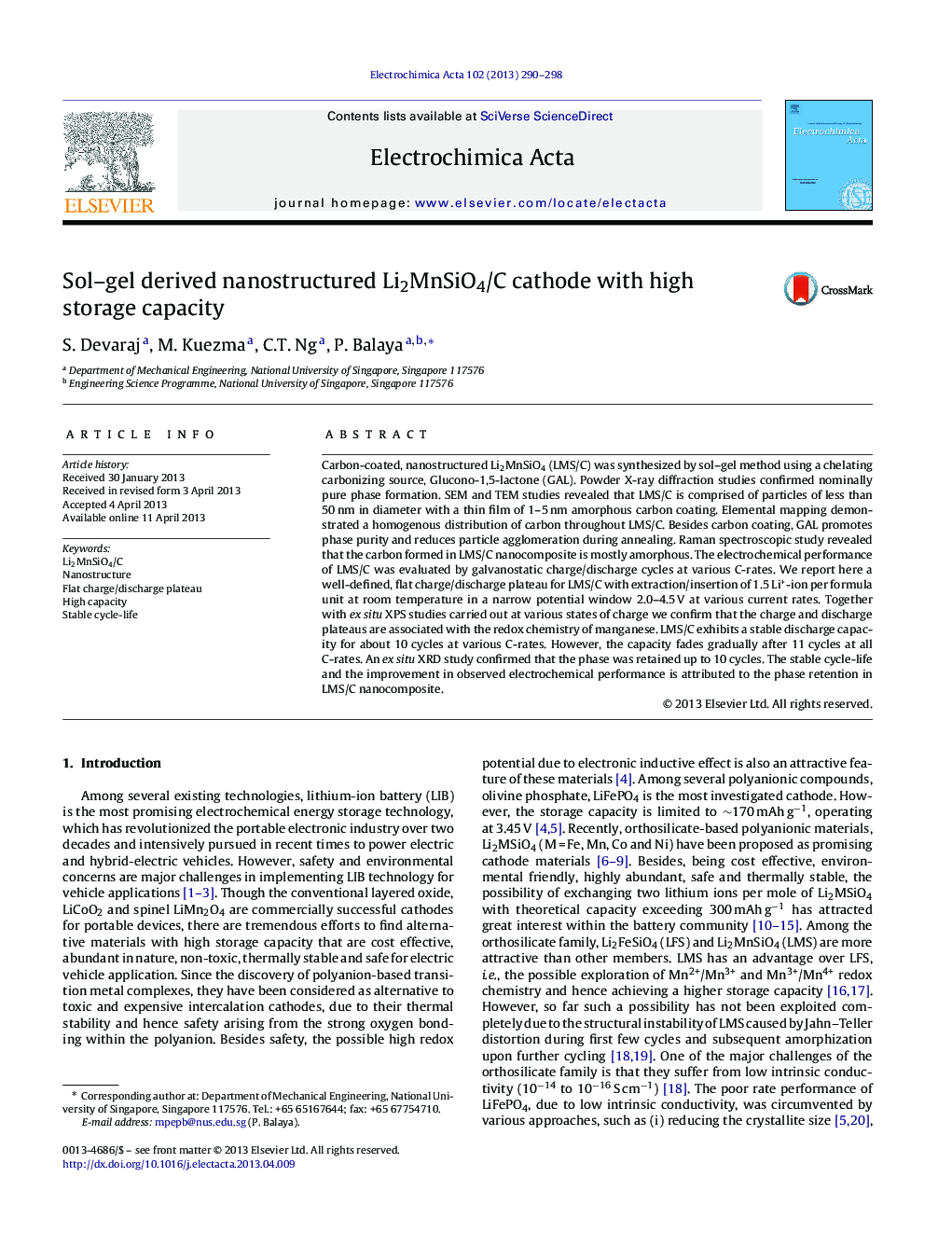| کد مقاله | کد نشریه | سال انتشار | مقاله انگلیسی | نسخه تمام متن |
|---|---|---|---|---|
| 187285 | 459639 | 2013 | 9 صفحه PDF | دانلود رایگان |

• Well-defined, flat charge/discharge plateau is reported for the storage processes in Li2MnSiO4 at various current rates.
• Ex situ XPS studies confirm that charge/discharge plateaus are associated with the redox chemistry of manganese.
• Stable cyclic performance up to 10 cycles is reported at room temperature at various current rates.
• Stable cycle-life and the improvement in observed electrochemical performance is attributed to the phase retention in LMS/C nanocomposite.
Carbon-coated, nanostructured Li2MnSiO4 (LMS/C) was synthesized by sol–gel method using a chelating carbonizing source, Glucono-1,5-lactone (GAL). Powder X-ray diffraction studies confirmed nominally pure phase formation. SEM and TEM studies revealed that LMS/C is comprised of particles of less than 50 nm in diameter with a thin film of 1–5 nm amorphous carbon coating. Elemental mapping demonstrated a homogenous distribution of carbon throughout LMS/C. Besides carbon coating, GAL promotes phase purity and reduces particle agglomeration during annealing. Raman spectroscopic study revealed that the carbon formed in LMS/C nanocomposite is mostly amorphous. The electrochemical performance of LMS/C was evaluated by galvanostatic charge/discharge cycles at various C-rates. We report here a well-defined, flat charge/discharge plateau for LMS/C with extraction/insertion of 1.5 Li+-ion per formula unit at room temperature in a narrow potential window 2.0–4.5 V at various current rates. Together with ex situ XPS studies carried out at various states of charge we confirm that the charge and discharge plateaus are associated with the redox chemistry of manganese. LMS/C exhibits a stable discharge capacity for about 10 cycles at various C-rates. However, the capacity fades gradually after 11 cycles at all C-rates. An ex situ XRD study confirmed that the phase was retained up to 10 cycles. The stable cycle-life and the improvement in observed electrochemical performance is attributed to the phase retention in LMS/C nanocomposite.
Figure optionsDownload as PowerPoint slide
Journal: Electrochimica Acta - Volume 102, 15 July 2013, Pages 290–298